Wild Stories: Mythic Landscapes in Western Ireland
During my recent travels in Ireland, I had the privilege of visiting two remarkable sites steeped in myth and legend: Knocknarae and Oweynagat. These sites, nestled within the ancient landscapes of western Ireland, are doorways into the rich tapestry of local mythology and folklore and how the land can speak to us through story.
Knocknarae and Queen Meadhbh's Tomb
Perched upon the hills overlooking the countryside, Knocknarae is home to Queen Meadhbh's Tomb, an unexcavated passage-grave shrouded in mystery. It is the largest and most prominent Neolithic monument in western Ireland, and its superb location offers breathtaking 360 degree view of the surrounding landscape. From the summit of Knocknarae, you can see many other Neolithic cairns in the distance, many which have solar and lunar alignments with Queen Meadhbh’s tomb, such as winter solstice sunset, suggesting a connection to and reverence for celestial events and a deep connection to the cycles of nature.
Queen Meadhbh is a central figure in Irish mythology, revered as a powerful and formidable queen of Connacht. Renowned for her strength, cunning, and fierce independence, she is depicted as a warrior queen who ruled with great authority. Meadhbh is perhaps best known for her role in the epic saga of the Táin Bó Cúailnge (Cattle Raid of Cooley), where she is depicted as the driving force behind the conflict between the provinces of Connacht and Ulster.
With her insatiable desire for wealth and power, Meadhbh embarks on a quest to capture the prized bull of Ulster, setting into motion a series of events that culminate in the legendary battle of this epic tale. Throughout Irish folklore, Queen Meadhbh is celebrated as a symbol of sovereignty, embodying the fierce spirit and indomitable will of the ancient Irish people.
The prominence of Queen Meadhbh in Irish mythology is fititng with the imposing stature of this site. Just as Meadhbh commanded authority and respect in the ancient tales, these sacred sites command attention with their commanding presence and panoramic views across the surrounding region. Climbing to the top of Knocknarae, and looking out across the land from its summit, these ancient landmarks offer a glimpse into the enduring legacy of Ireland's mythical past, and the timeless allure of myth and legend intertwined with the rugged beauty of the Irish landscape.
Oweynagat: The Doorwaynto the Underworld
Oweynagat, known as the "Cave of the Cats," is another site that holds a place of profound significance in Irish mythology and folklore. Located near Rathcroghan in County Roscommon, this mysterious cave is steeped in legend, serving as a portal to the Otherworld and a gateway to the realm of the sidhe. Its is a place that long captured the imagination of storytellers and scholars alike, and continues to fascinate visitors to this day.
In Irish mythology, Oweynagat is believed to be the entrance to the Otherworld, a mystical realm inhabited by supernatural beings known as the sidhe. According to legend, the cave is the dwelling place of the Morrigan, a goddess of war and fate who is said to emerge from its depths during Samhain, the ancient Celtic festival marking the end of the harvest season, when the veil between the worlds grows thin, allowing the spirits of the Otherworld to roam freely. Other tales speak of the cave's connection to the legendary hero Cu Chulainn and the great warrior queen Meadhbh, further adding to its aura of mythic significance.
Just inside the entrance of Oweynagat Cave, you can still read the ancient Ogham inscription that connect it to the saga of the Táin Bó Cúailnge. The inscription, which reads "Vraicci Maqi Medvvi," is believed to be a reference to Fraech, the son of Queen Meadhbh. This connection to Queen Meadhbh further imbues the cave with mythological significance, suggesting that it may have served as a sacred site or symbolic gateway associated with her reign. The presence of the Ogham inscription underscores the deep roots of Oweynagat in Ireland's ancient past and the important connection between land and story and culture.
For centuries, Oweynagat has been a site of pilgrimage and ritual, drawing visitors seeking spiritual insight and connection to the land. Its association with ancient mythology and folklore reflects the enduring potential for these sacred landscapes to speak to us, and be interwoven with our stories and folk beliefs.
Wild Stories and Exploring Storyscapes
Exploring these storied landscapes of Knocknarae and Oweynagat brings to mind the inspiring work of Helen Bruce in the field of “Storyscapes”. Helen Bruce, a writer and storyteller, delves into British folklore and embarks on pilgrimages to sacred and mythic sites, driven by a quest to rekindle the profound connections between landscape and narrative. Her research collides the mythic with the mundane, presenting folklore as a vibrant and contemporary force. During a recent conversation at the Sacred Earth Activism Summit, Helen shared insights into her exploration of Storyscapes, and how layers of memory, narrative, and lived experience converge to form the intricate tapestry of any landscape. Her work underscores the importance of both mythic heritage and current folklore as vital components of understanding and honouring sacred landscapes.
In the Wild Stories module of the Spiritual Rewilding course, I have delved into a similar theme, exploring how the power of storytelling can serve as a bridge to connect us with the voice of the earth. Through the lens of storytelling, we uncover narratives woven into the fabric of our local landscapes, revealing insights into the land's history, character, and inherent wisdom. And by engaging with stories about our immediate surroundings, we can learn new ways of being in relationship with the land and its inhabitants.
These stories not only deepen our connection to place but also inspire a sense of stewardship and reverence for the natural world. The Wild Stories module explores the transformative potential of storytelling in fostering a deeper connection with the earth and enriching our Spiritual Rewilding journey.


